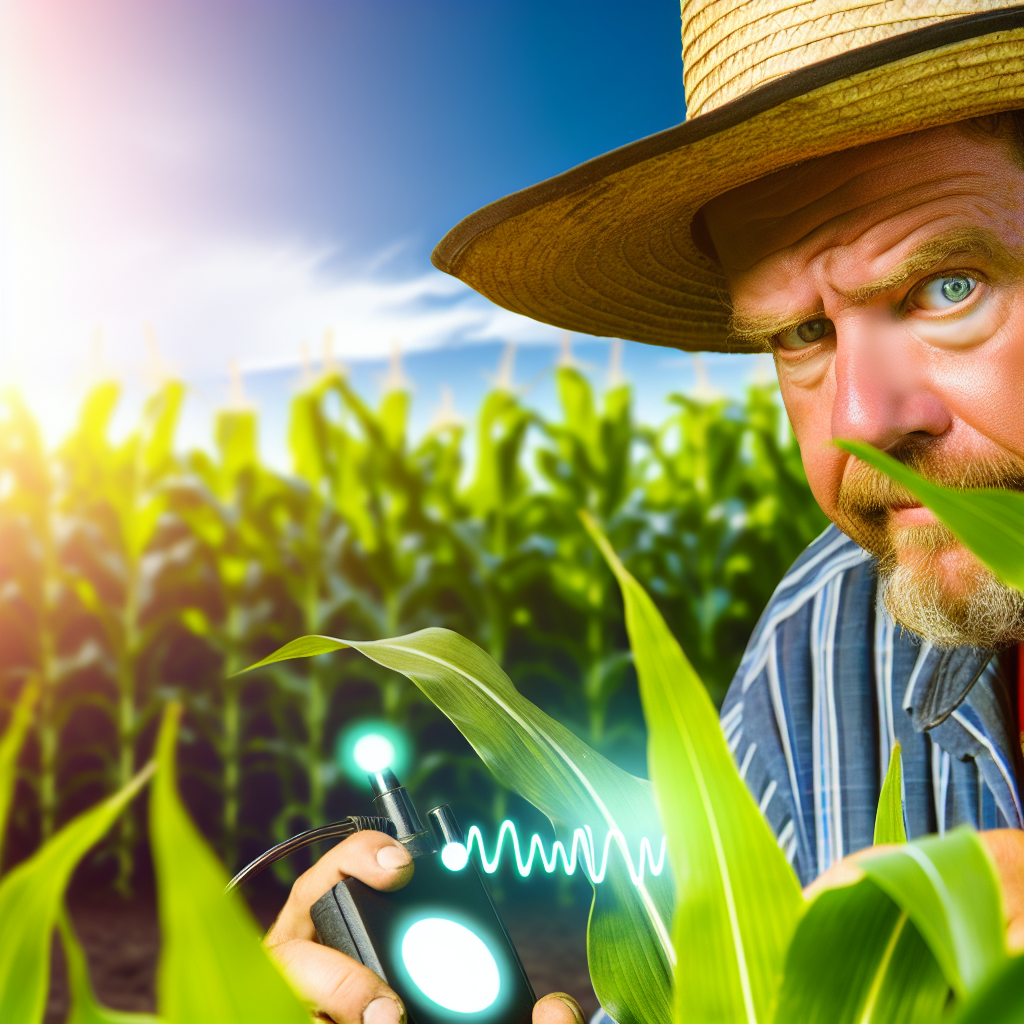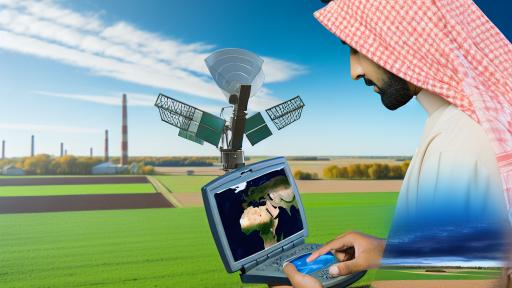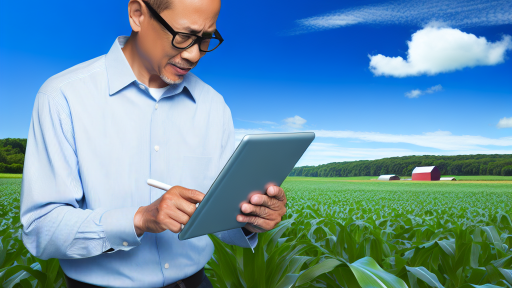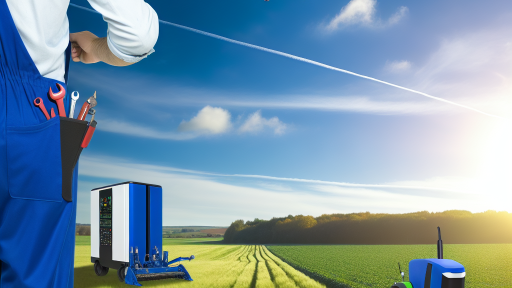Introduction to Data-Driven Farming
Data-driven farming utilizes technology to enhance agricultural practices.
This method embraces analytics, sensor technology, and data collection.
Farmers can make informed decisions by leveraging real-time data.
Thus, improving crop yields and managing resources effectively becomes achievable.
Overview of Crop Sensors
Crop sensors play a crucial role in modern agriculture.
These devices monitor various environmental factors impacting crops.
They collect data on soil moisture, temperature, and nutrient levels.
Additionally, crop sensors assist in evaluating crop health.
Farmers can implement targeted interventions based on this data.
Types of Crop Sensors
Different types of crop sensors exist for various applications.
Soil moisture sensors measure water content in the soil.
Nitrogen sensors analyze nutrient levels for optimal fertilization.
Multispectral sensors assess crop health and identify diseases.
Each type provides unique insights to improve farming efficiency.
Benefits of Using Crop Sensors
Integrating crop sensors offers multiple advantages for farmers.
Transform Your Agribusiness
Unlock your farm's potential with expert advice tailored to your needs. Get actionable steps that drive real results.
Get Started- They enable precise irrigation practices.
- Farmers can reduce fertilizer usage based on sensor data.
- Yield predictions become more accurate with real-time monitoring.
- Ultimately, crop quality and quantity can improve significantly.
Challenges and Considerations
Despite their benefits, crop sensors come with challenges.
Investment costs for these technologies can be high.
Farmers also require training to interpret and utilize sensor data.
Moreover, data management and integration with existing systems pose issues.
Types of Crop Sensors
Soil Moisture Sensors
Soil moisture sensors measure the water content of the soil.
They help farmers determine when to irrigate.
These sensors come in various types, including capacitive and resistive forms.
Capacitive soil moisture sensors offer advantages, such as low power consumption.
Resistive sensors are generally more affordable, making them widely accessible.
Farmers can integrate these sensors with irrigation systems for efficiency.
As a result, they can optimize water usage and enhance crop health.
Temperature Sensors
Temperature sensors monitor the environmental conditions of the crops.
They provide data on air and soil temperature.
This information is crucial for understanding plant growth stages.
For instance, warmer temperatures can accelerate growth rates.
Conversely, extreme heat can stress plants and reduce yield.
Farmers can use temperature readings to adjust practices accordingly.
Implementing this technology promotes a proactive approach to crop management.
Nutrient Sensors
Nutrient sensors analyze the levels of essential nutrients in the soil.
They help farmers identify deficiencies or excesses in nutrients.
Common nutrients monitored include nitrogen, phosphorus, and potassium.
By using nutrient sensors, farmers can tailor their fertilization plans.
This precision reduces waste and lowers costs for growers.
Moreover, it enhances the environmental sustainability of farming practices.
Showcase Your Farming Business
Publish your professional farming services profile on our blog for a one-time fee of $200 and reach a dedicated audience of farmers and agribusiness owners.
Publish Your ProfileOverall, nutrient sensors play a vital role in maximizing crop yield.
Benefits of Utilizing Crop Sensors
Increased Yields
Crop sensors play a vital role in enhancing agricultural yields.
They provide real-time data on soil conditions and plant health.
This data helps farmers make informed decisions about crop management.
Moreover, by analyzing this information, farmers can optimize their practices.
Consequently, they can expect higher productivity and better quality crops.
Farmers like Sarah Thompson have reported impressive yield increases through sensor use.
Such advancements make farming more efficient and profitable.
Reduced Resource Waste
Crop sensors also significantly reduce resource waste.
They allow farmers to allocate water and nutrients precisely where needed.
This targeted approach minimizes overuse, leading to conservation of resources.
As a result, farmers can lower operational costs while maintaining crop health.
Additionally, less waste contributes to environmentally sustainable practices.
Farmers can feel confident knowing they are preserving essential resources for future generations.
Incorporating crop sensors leads to both economical and ecological benefits.
See Related Content: Innovations in Vertical Farming for Modern Farmers
How to Select the Right Crop Sensors for Your Farm
Understanding Your Farming Needs
Begin by assessing your specific farming goals.
Identify the types of crops you grow and their unique requirements.
Consider factors such as soil type, climate, and irrigation practices.
A clear understanding of your needs will help narrow your options.
Evaluating Different Sensor Types
Crop sensors come in various types, each serving distinct purposes.
For nutrient monitoring, consider using spectral sensors.
Soil moisture sensors are essential for irrigation management.
Weather sensors can provide valuable data on environmental conditions.
Research the specific features of each sensor type before purchasing.
Considering Sensor Accuracy and Reliability
Accuracy is crucial for effective crop monitoring and management.
Look for sensors that are tested and proven in real-world conditions.
Read reviews and seek recommendations from other farmers.
Ensure the sensors you choose come from reputable manufacturers.
Cost and Budget Analysis
Establish a budget for your crop sensors before shopping.
Compare prices from multiple suppliers to find the best deals.
Remember, investing in quality sensors can save money in the long run.
Prioritize sensors that offer the best return on investment.
Integration with Existing Technology
Ensure your new sensors can integrate smoothly with existing farming technology.
Check compatibility with your farm management software.
Consider whether sensors have mobile or web applications for easy monitoring.
Seamless integration can streamline operations and improve efficiency.
Seeking Expert Advice
Consult with experts in precision agriculture for tailored advice.
Participate in agricultural workshops or training sessions.
Leverage online forums and communities to gather insights.
Showcase Your Farming Business
Publish your professional farming services profile on our blog for a one-time fee of $200 and reach a dedicated audience of farmers and agribusiness owners.
Publish Your ProfileEducated decisions will enhance your crop monitoring strategy.
You Might Also Like: Maintenance Tips For Farm Robotics
Integrating Crop Sensors with Farm Management Software
Understanding Crop Sensors
Crop sensors measure various parameters in the field.
They provide real-time data about soil conditions.
This data helps farmers make informed decisions.
Understanding these sensors is the first step.
Selecting the Right Sensors
Choosing suitable crop sensors is crucial for success.
Consider the type of crops you are growing.
Think about soil conditions and climate factors.
Research different brands and models available.
Read user reviews for additional insights.
Integrating with Farm Management Software
Linking sensors with your farm management software improves efficiency.
Start by selecting compatible software and sensors.
Follow the setup instructions carefully.
Ensure that the data from sensors syncs with your software.
Test the integration to confirm functionality.
Data Analysis and Interpretation
Data from crop sensors needs regular analysis.
Utilize analytical tools provided by the software.
Look for trends in soil health and crop performance.
Interpret the information to make timely decisions.
Share insights with your team for collective action.
Adjusting Farming Practices
Based on data analysis, adjust your farming practices.
Implement precision agriculture techniques where feasible.
Optimize irrigation schedules based on sensor data.
Monitor crop health closely and respond accordingly.
Stay flexible and be prepared to change strategies.
Continuous Monitoring and Improvement
Evaluate your sensor integration regularly.
Seek feedback from team members on the process.
Make adjustments to the system as needed.
Stay updated on new technologies and practices.
Continuous improvement ensures long-term success.
You Might Also Like: Automated Machinery Solutions for Small Farmers

Data Analysis Techniques
Interpreting Sensor Data
Farmers can leverage sensor data for impactful decisions.
Understanding this data enhances crop management practices.
Moreover, it helps identify patterns and trends over time.
Types of Crop Sensors
Various types of sensors exist in modern agriculture.
Soil moisture sensors offer insights into soil hydration levels.
Weather stations collect climatic data for accurate forecasts.
Furthermore, NDVI sensors assess plant health effectively.
Data Integration
Integrating sensor data is essential for comprehensive analysis.
Showcase Your Farming Business
Publish your professional farming services profile on our blog for a one-time fee of $200 and reach a dedicated audience of farmers and agribusiness owners.
Publish Your ProfileThis integration can occur with other data sources, such as satellite imagery.
Such a combination leads to more accurate decision-making.
Visualizing Data
Data visualization enhances understanding of complex datasets.
Charts and graphs can reveal trends quickly.
Tools like GIS software further assist in spatial analysis.
Actionable Insights
Farmers can translate data into actionable insights.
This process involves identifying the most pressing challenges.
For example, data may indicate a need for irrigation adjustments.
Continuous Monitoring
Continuous monitoring allows for timely responses to crop issues.
This enables farmers to adapt strategies when needed.
Ultimately, it supports optimizing crop yield and quality.
Explore Further: Choosing the Right Automated Equipment for Your Farm
Case Studies: Successful Implementation of Crop Sensors in Various Agricultural Settings
Introduction to Crop Sensors
Crop sensors play a crucial role in modern agriculture.
They help farmers monitor plant health and optimize input usage.
Additionally, these technologies enhance crop yields and sustainability.
Case Study: Precision Agriculture in Corn Production
Agricultural Solutions Inc. implemented crop sensors on a large corn farm in Iowa.
These sensors monitored nitrogen levels in the soil effectively.
As a result, the farm reduced nitrogen application by 30%.
This reduction led to lower costs and minimized environmental impact.
Case Study: Vineyard Management in California
Sunny Vineyards adopted crop sensors to manage their grape production.
The sensors tracked moisture levels and plant stress continuously.
This data allowed them to irrigate more efficiently.
Consequently, wine quality improved significantly.
Case Study: Rice Production in Southeast Asia
Green Fields Co. utilized crop sensors to enhance rice yield in Vietnam.
These sensors provided real-time data on water and nutrient levels.
Farmers adjusted their practices based on accurate insights.
This led to a yield increase of up to 25%.
Benefits Across Agricultural Settings
Crop sensors offer multiple benefits to farmers.
They increase resource efficiency and reduce waste.
Moreover, sensors enhance decision-making with real-time information.
Farmers enjoy better crop health and increased profit margins.
Future Trends in Crop Sensor Technology
The future of crop sensors looks promising.
Advancements in IoT and AI will enhance data accuracy.
Farmers can expect improved predictive analytics.
These innovations may enable even smaller farms to benefit.
Future Trends in Crop Sensing Technology
Emergence of Novel Sensors
New sensors are continuously emerging in the agricultural technology landscape.
These sensors focus on soil health, moisture levels, and crop health.
Future innovations promise faster data collection and analysis.
This will enhance decision-making for farmers.
Integration of Artificial Intelligence
Artificial intelligence (AI) will significantly enhance crop sensing technology.
Showcase Your Farming Business
Publish your professional farming services profile on our blog for a one-time fee of $200 and reach a dedicated audience of farmers and agribusiness owners.
Publish Your ProfileAI algorithms can analyze vast datasets more efficiently.
These systems will provide actionable insights for farmers.
Furthermore, AI can predict crop yields and pest infestations.
Advancements in Satellite Technology
Satellite technology continues to evolve in agriculture.
Remote sensing via satellites offers a broader spatial coverage.
This will allow for real-time monitoring of crop health.
Farmers can adjust their practices based on satellite data.
Improved Data Management Systems
The management of agricultural data is crucial in modern farming.
Cloud-based systems will streamline data storage and sharing.
Farmers will benefit from easier access to vital information.
These systems can integrate different sensing technologies.
Focus on Sustainability
There is an increasing emphasis on sustainable farming practices.
Crop sensors will play a key role in this transition.
They can help optimize resource usage, reducing waste.
This aligns with global goals for sustainable agriculture.
Additional Resources
Precision Agriculture: Benefits and Challenges for Technology …
Conservation Innovation Grants Awards Fiscal Year 2023 | Natural …




